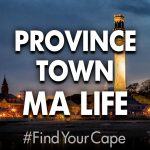Welcome to Life in Provincetown, Massachusetts.
 Provincetown is a New England town located at the extreme tip of Cape Cod in Barnstable County, Massachusetts, in the United States.
Provincetown is a New England town located at the extreme tip of Cape Cod in Barnstable County, Massachusetts, in the United States.
Provincetown is famously known as having one of the largest alternative lifestyle communities in the country, but it is so much more than that. Its rich history, its relationship with the sea, and its eclectic colony of artists makes it a place like no other.
A small coastal resort town with a year-round population of 3,664 as of the 2020 United States Census, Provincetown has a summer population as high as 60,000.
Often called “P-town” or “P’town”, the locale is known for its beaches, harbor, artists, tourist industry, and as a popular vacation destination for the alphabet community.
At the time of European encounter, the area was sparsely inhabited by the historic Nauset tribe, who had a settlement known as “Meeshawn”. They spoke Massachusett, a Southern New England Algonquian language dialect that they shared in common with their closely related neighbors, the Wampanoag.
On 15 May 1602, having made landfall from the west and believing it to be an island, Bartholomew Gosnold initially named this area “Shoal Hope”. Later that day, after catching a “great store of codfish”, he chose instead to name this outermost tip of land “Cape Cod”. Notably, that name referred specifically to the area of modern-day Provincetown; it wasn’t until much later that that name was reused to designate the entire region now known as Cape Cod.
On 9 November 1620, the Pilgrims aboard the Mayflower sighted Cape Cod while en route to the Colony of Virginia. After two days of failed attempts to sail south against the strong winter seas, they returned to the safety of the harbor, known today as Provincetown Harbor, and set anchor.
It was here that the Mayflower Compact was drawn up and signed. They agreed to settle and build a self-governing community, and came ashore in the West End.
Though the Pilgrims chose to settle across the bay in Plymouth, Cape Cod enjoyed an early reputation for its valuable fishing grounds, and for its harbor: a naturally deep, protected basin that was considered the best along the coast.
In 1654, the Governor of the Plymouth Colony purchased this land from the Chief of the Nausets, for a selling price of two brass kettles, six coats, 12 hoes, 12 axes, 12 knives and a box.
That land, which spanned from East Harbor (formerly, Pilgrim Lake)—near the present-day border between Provincetown and Truro—to Long Point, was kept for the benefit of Plymouth Colony, which began leasing fishing rights to roving fishermen.
The collected fees were used to defray the costs of schools and other projects throughout the colony.
In 1678, the fishing grounds were opened up to allow the inclusion of fishermen from the Massachusetts Bay Colony.
Following the American Revolution, Provincetown grew rapidly as a fishing and whaling center. The population was bolstered by numerous Portuguese sailors, many of whom were from the Azores, and settled in Provincetown after being hired to work on US ships.
By the 1890s, Provincetown was booming and began to develop a resident population of writers and artists, as well as a summer tourist industry.
After the 1898 Portland Gale severely damaged the town’s fishing industry, members of the town’s art community took over many of the abandoned buildings.
By the early decades of the 20th century, the town had acquired an international reputation for its artistic and literary productions.
In the mid-1960s, Provincetown saw population growth. The town’s rural character appealed to the hippies of the era; property was relatively cheap and rents were correspondingly low, especially during the winter. Many of those who came stayed and raised families.
Commercial Street, where most of the town’s businesses are located, gained numerous cafés, leather shops, and head shops.
By the 1970s, Provincetown had a significant gay population, especially during the summer tourist season, when restaurants, bars and small shops serving the tourist trade were open.
There had been a gay presence in Provincetown as early as the start of the 20th century as the artists’ colony developed, along with experimental theatre.
Drag queens could be seen in performance as early as the 1940s in Provincetown.
In 1978 the Provincetown Business Guild (PBG) was formed to promote gay tourism and today Provincetown is perhaps the best-known gay summer resort on the East Coast.
The 2010 US Census revealed Provincetown to have the highest rate of same-sex couples in the country.
For nearly all of Provincetown’s recorded history, life has revolved around the waterfront − especially the waterfront on its southern shore − which offers a naturally deep harbor with easy and safe boat access, plus natural protection from the wind and waves.
An additional element of Provincetown’s geography tremendously influenced the manner in which the town evolved: the town was physically isolated, being at the hard-to-reach tip of a long, narrow peninsula.
PROVINCETOWN TRAILS
- Corn Hill to Pamet Harbor Railroad Right of Way
- Whistle Path Woods
- Foss Woods
- Clapps Pond
- Hatches Harbor Trail
- Shank Painter Overview
- Nicky’s Park
View our official Provincetown community page at Provincetown.MA.Life





